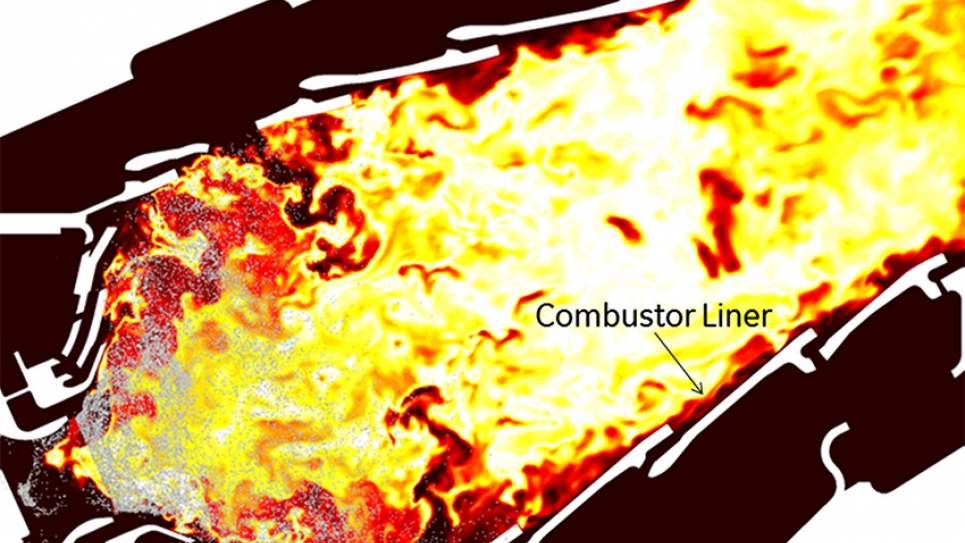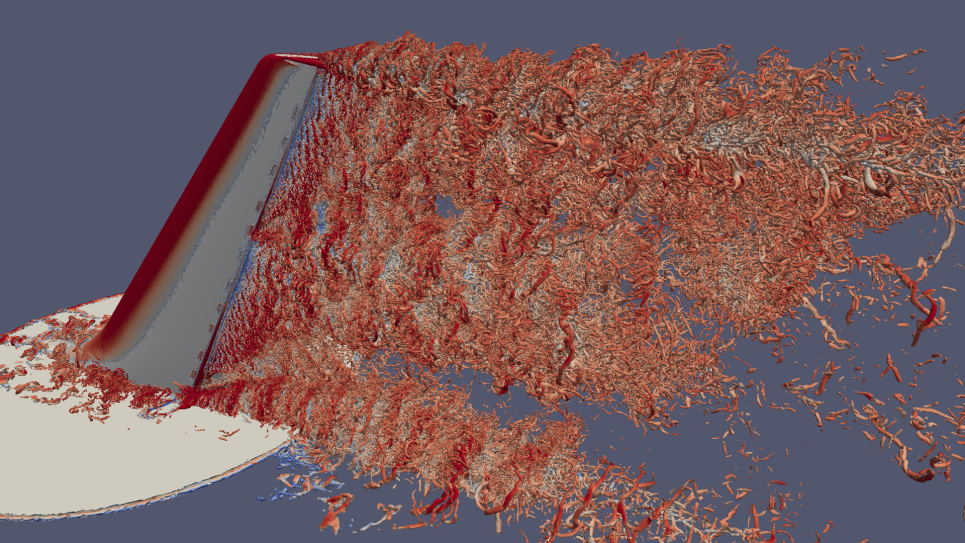
Large Eddy Simulations of Combustor Liner Flows
In 2012, the commercial aviation industry spent an estimated $207 billion on fuel, or about 33 percent of their operating costs. That amounts to approximately 5 million barrels of oil per day, or about 6 percent of the world’s total oil usage. Aviation gas turbine engines are also significant producers of CO2 and other harmful greenhouse gas emissions. As the aviation industry continues to grow, the cost and environmental impacts of operating gas turbine engines will continue to increase as well.
In the second year of this multiyear INCITE project, researchers will continue their studies of the complex near-wall physics of combustor liner flows with a focus on aircraft engine applications. Understanding and predicting the aero-thermal flow field is key to designing and optimizing combustors for better fuel efficiency, lower emissions, and improved performance. The proposed calculations require significantly greater computational resources than those traditionally used in industry, necessitating the use of DOE’s leadership-class supercomputers.
The calculations use large eddy simulations to model the behavior of an idealized configuration representative of combustor liners. This will enable modelers to generate high-fidelity datasets that will be used to improve the low-fidelity models currently available to designers. The same approach will be applied to a more complex configuration, involving a larger domain, and more realistic flow characteristics, representative of large-scale flow unsteadiness present in aircraft engines. Ultimately, the findings will be applied to an actual multi-cup General Electric rig, providing a vehicle to test the improved models developed in the first two phases of the program. This will give designers a better understanding of the complex unsteady processes governing the aero-thermal field around combustor liners.

